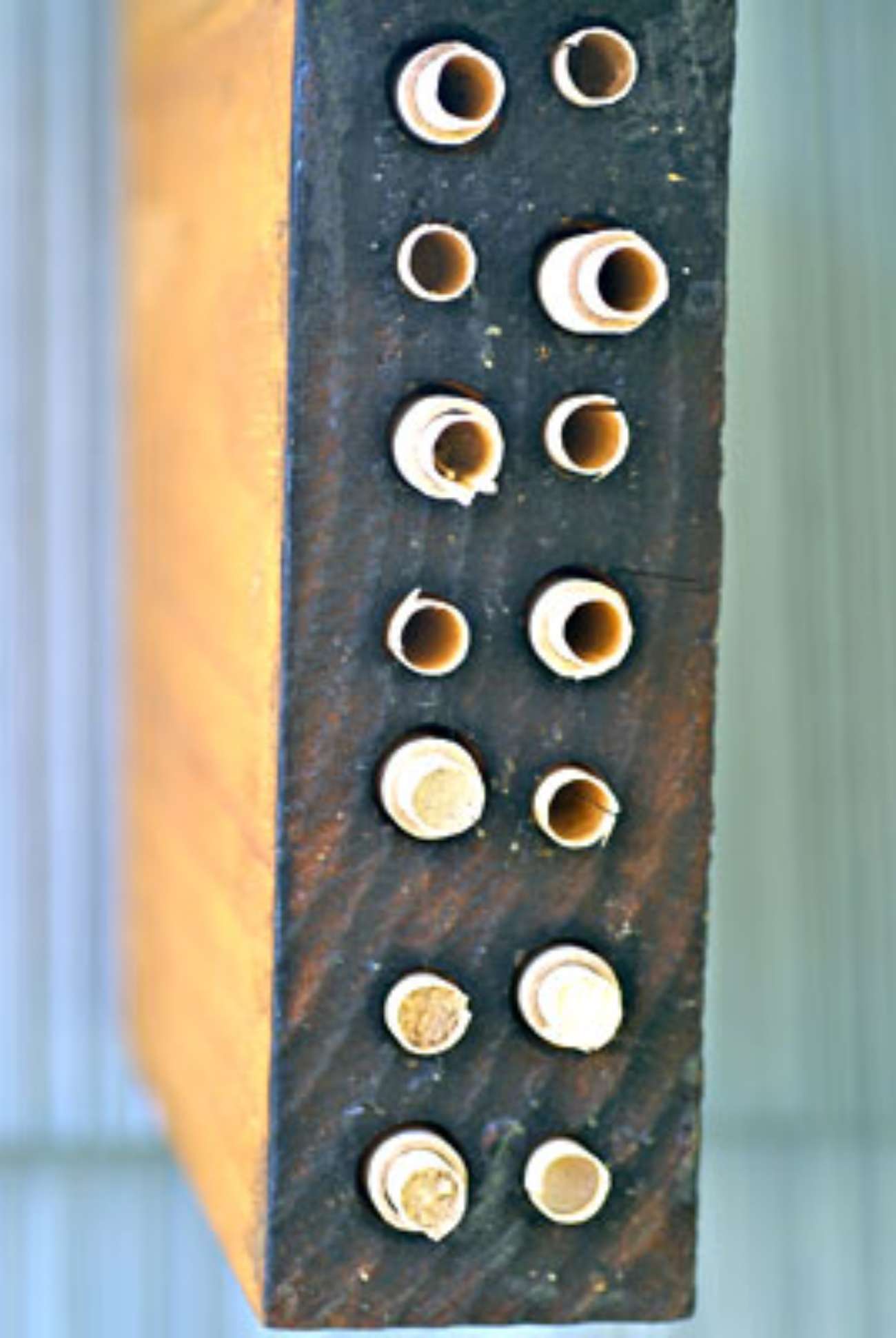Welcoming Mason Bees to Your Yard

Did you know that there are over 800 species of native bees in Canada? These bees are critical for our natural ecosystems and food production. There are two main things native bees need: flowers for pollen and nectar, and safe nesting sites. In part one of this blog series, we gave some tips on how to enhance your yard with food for pollinators. In this second part, we’ll explore how to provide nesting for mason bees.
Mason bee houses are gaining in popularity, and it’s no wonder; these magnificent solitary bees are docile, pollinate our gardens, allow us to observe nature up close, and readily make their homes in artificial houses.
Mason bee homes are simple and can be bought or home made. Unfortunately, many of them are not built properly to help support healthy and thriving mason bees. But, if you keep just a few things in mind, you’ll have a buzzing and beautiful bee house:
- Houses must be ‘cleanable’: Mason bee cocoons from mason bee houses need to be removed, washed, and stored each winter. If not, the cocoons will build up pests; this can hurt the developing bees in the house and potentially spread pests and diseases to wild-nesting bees. Cleanable houses can come in different forms: A. reeds or paper that are opened for winter cleaning (single use) B. straws inserted into blocks with holes, and C. modular blocks (see pictures below)
- Tunnels need to be the right depth and width: Mason bees prefer tunnels that are 7.5 mm to 9.5 mm (19/64 – 3/8 ins) in diameter. The depth of the holes should ideally be 15 to 18 cm long (6 to 7 ins). Shorter tunnels can cause an unbalanced male/female ratio and predation. Tunnels need to be closed at the back.
- Face house towards the sun and protect from the elements: place your house at least 1m (3ft) above the ground, have it facing towards the sun, and have a small ‘roof’ which can help protect it from rain.
- Make sure you have food and nesting material for the bees: Mason bees don’t like to travel far. Have plants for them in your yard that are blooming when they emerge in the spring and some moist soil for the mothers to make their nests. See part 1 of this blog for tips on providing food for bees.

You can buy starter cocoons to get your yard population going, or just put out your nest and wait for them to come.
These are the main things to look for if you’re buying a mason bee house or plan to build your own. After that, let your creativity take over! Explore the internet for fun designs and get hands- and eyes-on with these cute and important creatures! See pictures below for some bee house designs.
Mason Bee House Designs
A. Single Use Bee Houses


B. Multiple Use (straws inserted into blocks)

C. Multiple Use (modular blocks)


Check out the honibe® website at https://honibe.com.

